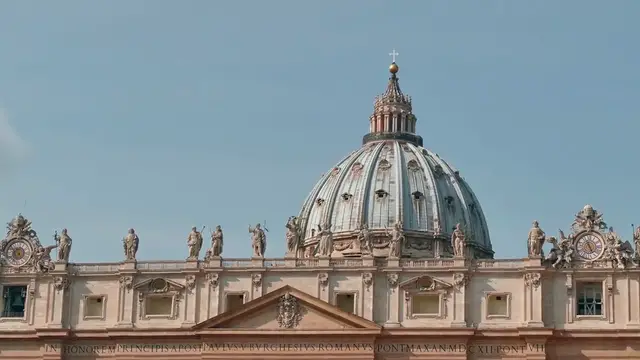
St. Peter’s Basilica The Heart of Vatican City and Why It’s a Must-See Landmark
Dec 25, 2024
St. Peter’s Basilica: The Heart of Vatican City and Why It’s a Must-See Landmark
Nestled at the heart of Vatican City, one of the most iconic and revered structures in the world stands as a symbol of religious devotion, architectural grandeur, and historical significance: St. Peter’s Basilica. Whether you're a history buff, an art lover, or a pilgrim seeking a deeper connection with the Catholic faith, St. Peter’s Basilica offers an unforgettable experience. From its awe-inspiring design to its spiritual significance, this landmark is a must-see for anyone visiting Rome or exploring the rich heritage of the Vatican.
In this article, we will explore why St. Peter’s Basilica is considered the “heart” of Vatican City, its architectural beauty, and the important role it plays in the global religious landscape.
The Significance of St. Peter’s Basilica
St. Peter’s Basilica is one of the holiest Catholic sites in the world. It is traditionally believed to be built on the site where St. Peter, one of Jesus Christ’s apostles and the first pope of the Roman Catholic Church, was buried. For centuries, pilgrims from all over the world have journeyed to Vatican City to visit this sacred site, seeking a connection to the early history of the Church and a deeper sense of faith.
The basilica serves as the central hub of Vatican City, the smallest independent state in the world, which is the spiritual and administrative headquarters of the Roman Catholic Church. It is also the seat of the Pope, who, as the leader of the worldwide Catholic Church, conducts significant religious ceremonies at the basilica. For Catholics, St. Peter’s is a pilgrimage site, with many viewing it as the most important church in the Christian world, second only to St. Peter's tomb, which lies directly beneath the altar of the basilica.
A Masterpiece of Renaissance Architecture
St. Peter’s Basilica is not just a religious center, but an architectural marvel that represents the pinnacle of Renaissance art and design. The building as we see it today is the result of centuries of work by some of the most renowned architects, artists, and sculptors of the Renaissance and Baroque periods.
Michelangelo’s Dome: One of the most striking features of St. Peter’s Basilica is its iconic dome, designed by Michelangelo Buonarroti in the 16th century. This massive structure rises high above Vatican City, visible from miles around, and is one of the largest domes in the world. The dome’s sweeping curves and intricate design represent the ingenuity of Renaissance architecture and offer breathtaking views of the city when visitors choose to climb to the top.
The Pietà: Inside the basilica, visitors can view one of Michelangelo’s most famous sculptures, The Pietà, which depicts the Virgin Mary cradling the dead body of Christ. The marble sculpture, completed when Michelangelo was just 24 years old, is widely regarded as one of the finest examples of Renaissance art. Its exquisite detail and emotional depth make it one of the most moving pieces in the basilica.
Bernini’s St. Peter’s Square: The grand St. Peter’s Square, located directly in front of the basilica, was designed by Gian Lorenzo Bernini in the 17th century. The square is an architectural masterpiece, with its massive colonnades embracing visitors in an embrace that symbolizes the warmth and unity of the Church. The central obelisk and two fountains add to the elegance of the space, making it a fitting entrance to the sacred basilica.
Show More Show Less #Arts & Entertainment
